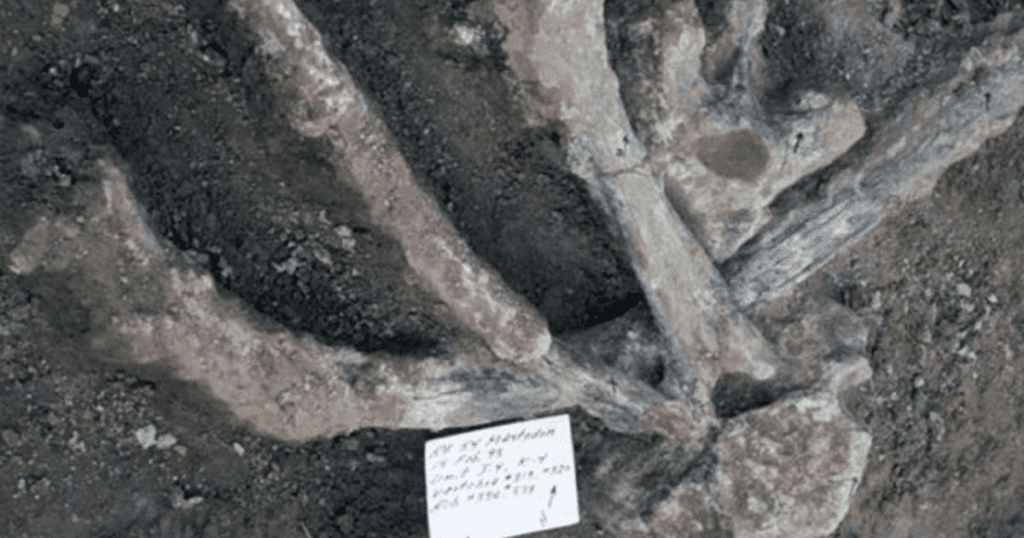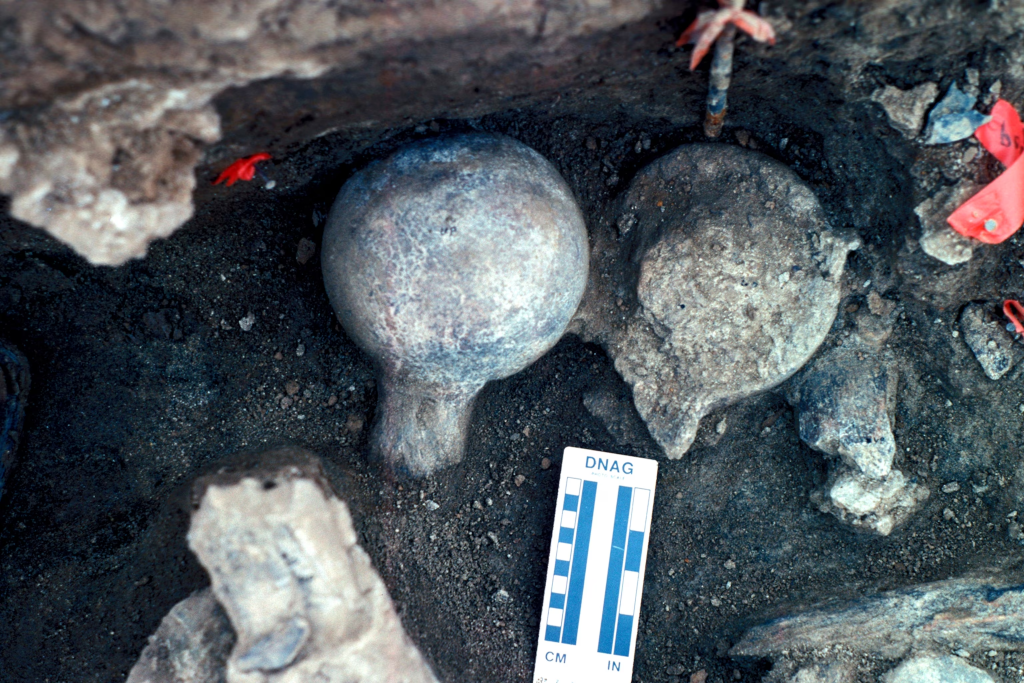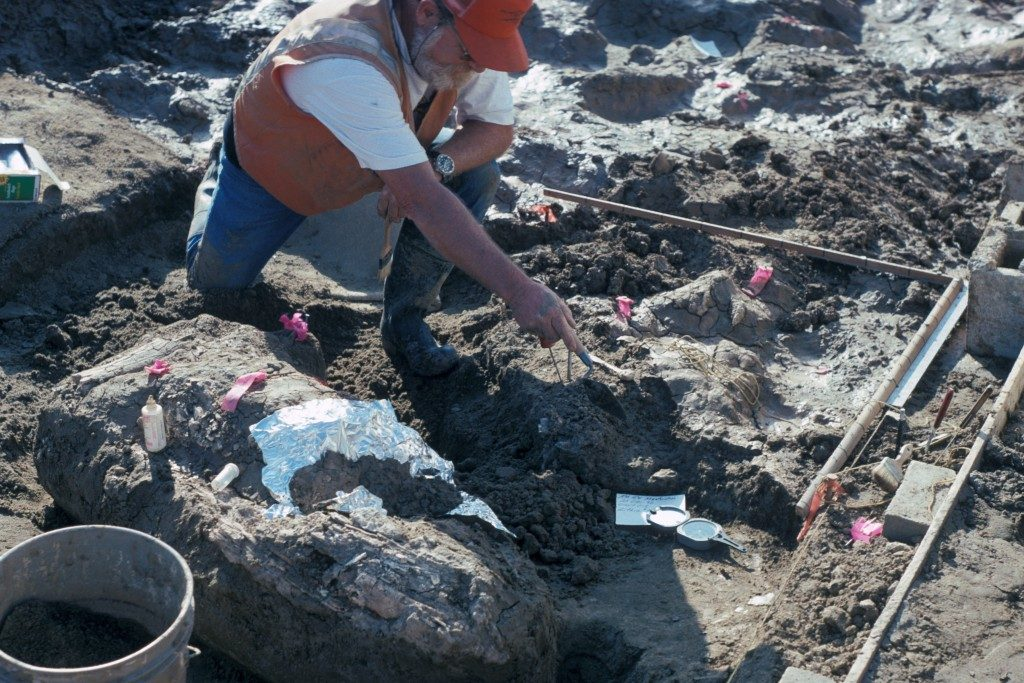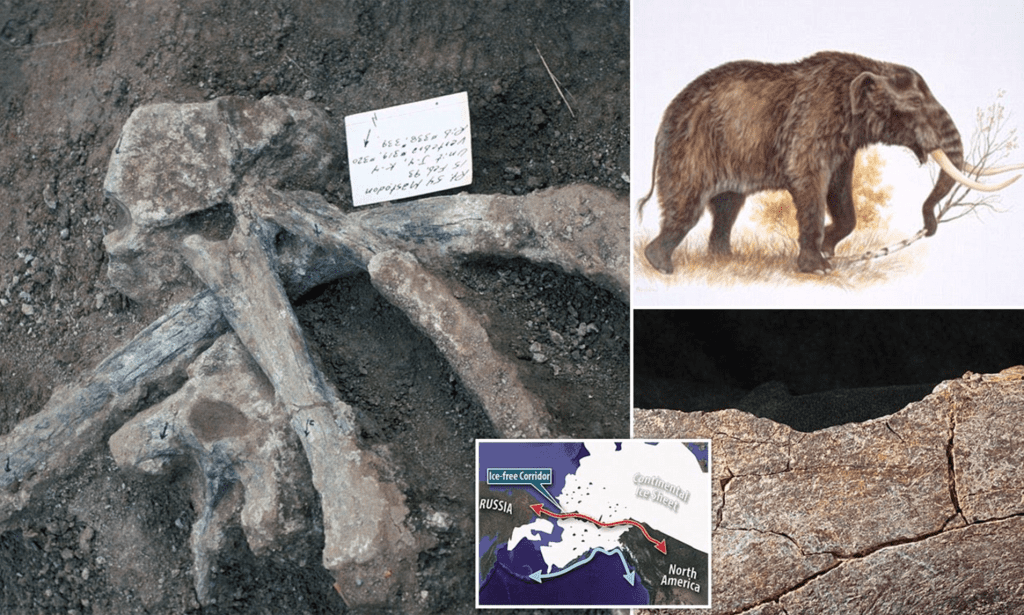What if the timeline of human migration into North America is wrong by more than 100,000 years?
That’s the question scientists were forced to confront after a groundbreaking and controversial discovery in Southern California. Stone tools and shattered mastodon bones found near San Diego suggest that ancient humans or at least their close relatives may have been in North America as far back as 130,000 years ago. If confirmed, this would push the known arrival of hominins in the Americas back by more than 100,000 years.
And it’s shaking up what we thought we knew about our prehistoric past.

The Cerutti Mastodon Site: A Game-Changing Find
In 1992, while working on a freeway expansion project, construction workers stumbled across fossilized bones and rocks in San Diego County. The site was turned over to scientists, who spent years analyzing the material. What they found would take decades to interpret and even longer to digest.

The bones belonged to a mastodon, a now-extinct Ice Age relative of elephants. But these weren’t just bones lying peacefully in the ground. Many were smashed, broken in ways that didn’t appear to be natural. Nearby were large rocks, seemingly used as hammerstones and anvils. Some of the bones were fractured in spiral patterns, a sign often linked to human activity like breaking bones to extract marrow.
What startled researchers the most was the age of the site: 130,000 years, based on uranium-series dating of the bones.
Video:
Were Homo Sapiens the First Hominid in North America? A Deep Dive into the Cerutti Mastodon Site
A Timeline That Doesn’t Add Up Or Does It?
Until now, the earliest widely accepted evidence of humans in North America dated back roughly 15,000 to 20,000 years long after the last Ice Age when lower sea levels made the Bering Land Bridge passable.
So how could anyone have been here six times earlier?
One theory is that these weren’t anatomically modern humans, but rather a different branch of the human family tree such as Homo erectus or even Denisovans who might’ve made it into North America via a now-unknown route. But this possibility remains speculative and highly debated.

Skeptics argue that the rocks may have been moved by natural forces, or that the bone damage could have come from other causes. Yet the original research team, led by paleontologist Tom Deméré and published in the prestigious journal Nature, stands by their findings. They believe the evidence strongly suggests the site was altered by hominin hands.
Why This Matters for Human History
If the Cerutti Mastodon site is legitimate, it changes everything. It means that humans (or their close cousins) were more mobile and more globally dispersed than we ever imagined. It challenges the long-standing narrative of the peopling of the Americas and opens new doors to explore how and when human-like species may have traveled.
Video:
130,000 Year Old Evidence Of Ancient Humans in North America?
It also invites new questions: Did these early visitors thrive? Did they vanish without leaving a larger footprint? Could there be other sites, still undiscovered, hiding in plain sight?
The Debate Rages On
Unsurprisingly, not everyone in the archaeological community is convinced. Many scholars remain cautious, urging more evidence and peer-reviewed research. That’s understandable extraordinary claims demand extraordinary proof.
Still, even if consensus hasn’t been reached, the site has sparked a new wave of curiosity and exploration. Scientists are now reexamining other fossil sites and digging deeper literally and figuratively into North America’s deep past.

A Mystery That May Yet Be Solved
Whether the Cerutti Mastodon site becomes the Rosetta Stone of ancient American history or a misunderstood anomaly, it’s already done something remarkable. It’s reminded us that our past is far more mysterious and far more fascinating than we often believe.
Because sometimes, all it takes is a broken bone and a rock to rewrite the story of humanity.


